An oasis of tranquility and faith, where history meets spirituality in the heart of Medina.
Ever wondered what it’s like to step into a place where every corner tells a story of faith, history, and unity?
Welcome to the Prophet’s Mosque in Medina, a sanctuary not just in its spiritual essence but in its welcoming embrace to all who visit.
Picture an expansive, serene space where modern spirituality intertwines with centuries of heritage.


Open year-round, with specific prayer times.
Modest, conservative clothing is required, covering arms and legs.
Early mornings or late evenings for a more reflective experience. The Ramadan season offers a unique, vibrant atmosphere.
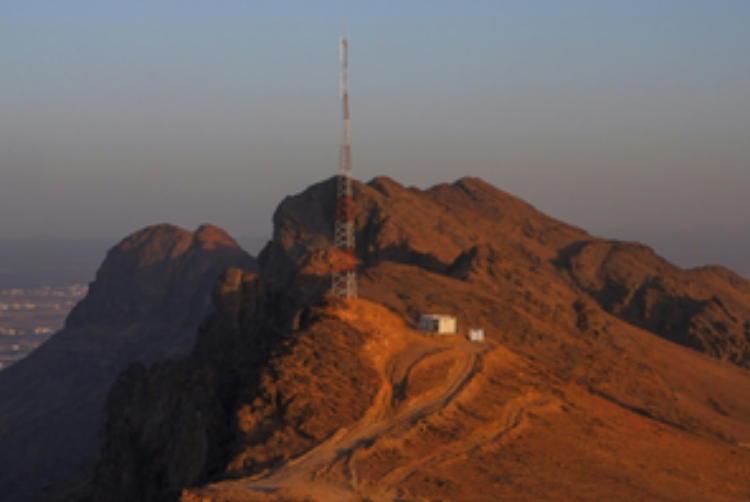
Explore Mount Uhud, a site of historic battles and profound legacy, just moments from the Prophet’s Mosque.

Visit Masjid Quba, the first mosque of Islam, offering a serene and spiritual experience near the Prophet’s Mosque.

Pay respects at the Grave of Hamzah, a revered martyr, enhancing your spiritual journey near the Prophet’s mosque.
One of Islam's two holiest sites.
Originally built by the Prophet Muhammad, peace be upon him.
Features 10 minarets and is one of the largest mosques in the world.

The Green Dome, under which lies the Prophet's tomb, is an iconic symbol of the mosque.
Expanded numerous times over the centuries to accommodate the growing number of pilgrims.
Accommodates over a million worshippers during peak seasons.





In the heart of Medina lies the Prophet's Mosque, a foundation not just built on the desert sands but on the profound unity of a burgeoning Muslim community.
It was here, upon the Prophet Muhammad's arrival, that the mosque's initial structure was erected, marking the birthplace of a united Islamic society.
This wasn't merely a place for prayer; it was where the Prophet, peace be upon him, and his companions laid down the principles of brotherhood, equality, and peace that continue to resonate within its walls.

The Prophet's Mosque has always been more than a spiritual haven; it's a symbol of the Islamic ethos of hospitality.
Historical accounts tell of the Prophet, peace be upon him, ensuring that no traveler or seeker of knowledge left the mosque's sanctuary without shelter or sustenance.
This tradition of hospitality endures, with the mosque offering iftar meals to fasting pilgrims during Ramadan, embodying the timeless spirit of communal sharing and care.
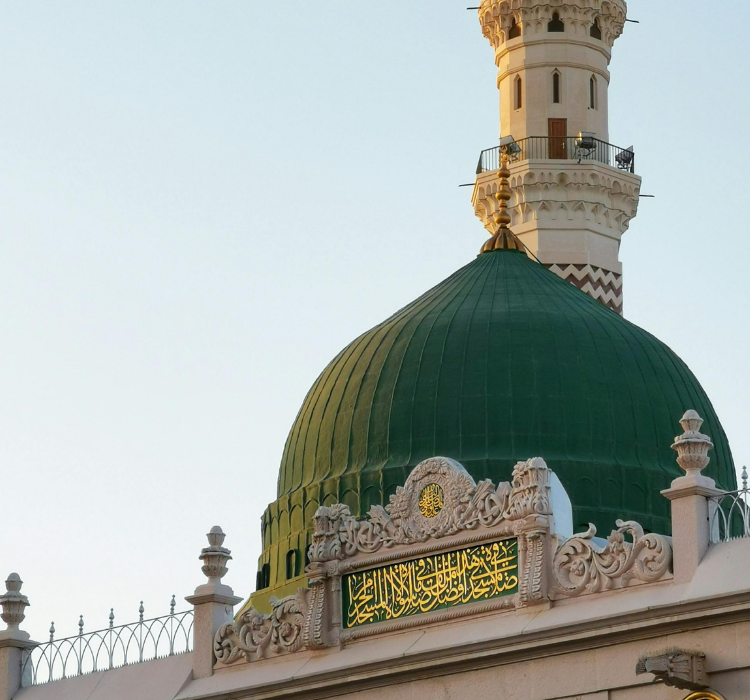
From its humble beginnings, the Prophet's Mosque has witnessed extensive expansions, reflecting the growing Ummah (Islamic community).
Each expansion, from the Umayyad era to the modern Saudi expansions, tells a story of the Islamic world's evolving needs and architectural ingenuity.
These expansions have not only accommodated millions of worshippers but have also preserved the mosque's historical essence, blending the old with the new in a seamless tapestry of faith.

One of the mosque's most iconic features, the Green Dome, shelters the final resting place of the Prophet Muhammad, peace be upon him.
Originally unpainted, the dome was first colored green in 1837, becoming a symbol of peace and a beacon of hope for pilgrims.
Its color, visible from afar, guides visitors not just to the mosque's physical location but to a deeper spiritual presence at its heart.

The Prophet's Mosque is renowned for its striking minarets, which have evolved from simple structures to sophisticated architectural feats over centuries.
These minarets have borne witness to countless calls to prayer, echoing through Medina and calling the faithful to reflection and worship.
They stand as high points of Islamic art and architecture, guiding not just the physical but the spiritual journey of the faithful.
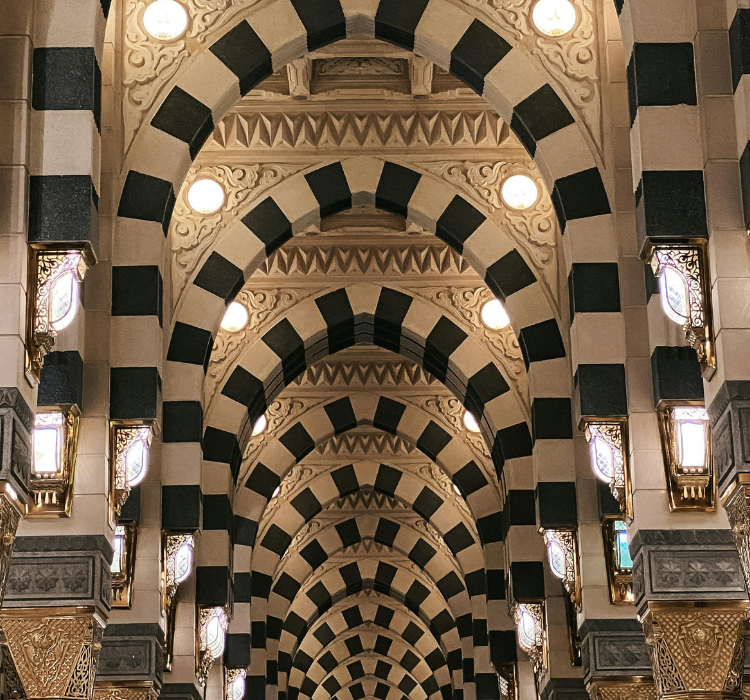
Within the Prophet's Mosque is a profound testament to divine revelation—the change of the Qibla (prayer direction) from Jerusalem to Mecca.
This significant event, marked within the mosque, symbolizes the unity and direction of the Muslim faith, turning hearts collectively towards the Kaaba.
It's a poignant reminder of the mosque's central role in Islamic worship and unity.
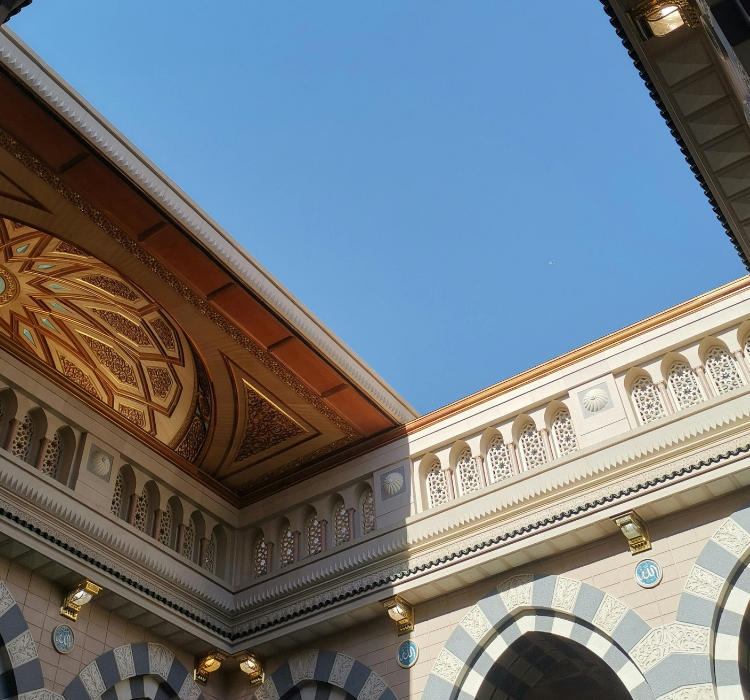
The expansive courtyard of the Prophet's Mosque, with its iconic umbrellas, offers a serene space for reflection and prayer.
This architectural marvel, designed to protect worshippers from the desert sun, transforms the courtyard into a haven of peace, where time seems to stand still, and the hustle of the outside world fades away.

The Prophet's Mosque has long been a beacon of Islamic learning, where scholars and seekers of knowledge gather to study and discuss the Quran and Hadith.
This tradition of knowledge and learning is ingrained in the mosque's foundation, making it a vibrant center of Islamic scholarship and an enduring source of divine wisdom.
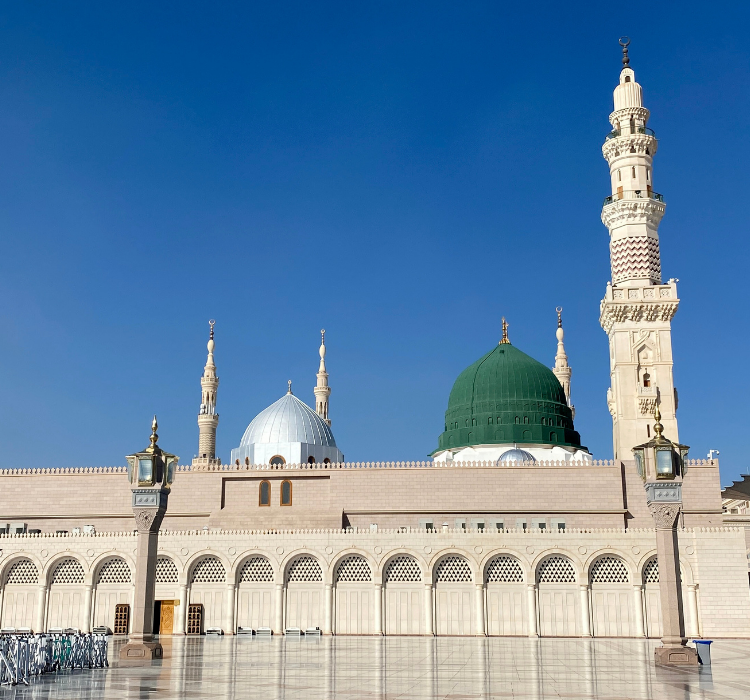
The Raudah, an area between the Prophet's house and his pulpit, is described in Hadith as a garden from the gardens of Paradise.
Pilgrims and worshippers seek its tranquility, hoping to offer prayers in a spot blessed by divine promise.
The Raudah's verdant green carpet and serene ambiance offer a glimpse of celestial peace, a moment of heaven on earth.

The Prophet's Mosque stands as a timeless legacy, a light that continues to guide the spiritual journey of millions.
Its stories, from its foundation to its ongoing role as a sanctuary of faith, weave a rich tapestry of spiritual heritage, inviting all to partake in its peace and sanctity.
This mosque is not just a structure of bricks and mortar; it's a living testament to the enduring spirit of Islam, a sanctuary of peace, prayer, and unity that transcends the boundaries of time and geography.

The Prophet's Mosque, originally a modest structure of palm trunks and mud walls, was built by the Prophet Muhammad himself, alongside his companions.
This humble abode, initially serving as both a place of worship and a community hub, evolved into one of the world's largest mosques.
The simplicity of its inception, contrasted with its grand stature today, symbolizes the profound growth of the Islamic faith from its modest origins.

Under the caliphates of Umar ibn Al-Khattab and Uthman ibn Affan, the Prophet's Mosque underwent significant expansions to accommodate the rapidly growing Muslim community.
Umar expanded the mosque shortly after the Prophet's passing, while Uthman later doubled its size, reflecting the Islamic community's burgeoning spirit and the mosque's central role in it.
These expansions highlight the communal and inclusive spirit of Islam, accommodating believers from all walks of life.

Surrounding the Prophet's Mosque is an expanse known as the Riyad-ul-Jannah, or the Garden of Paradise.
This verdant area, marked by its distinctive green carpet, holds a special place in the hearts of Muslims.
It is believed that prayers offered here are never rejected, making it a sought-after spot for reflection and supplication.
The tranquility of this garden within the mosque's precincts offers a peaceful retreat for those seeking solace and connection with the divine.
The Green Dome, standing over the Prophet Muhammad's tomb, is an iconic symbol of the Prophet's Mosque.
Initially constructed in 1279, it was painted green in 1837, becoming a distinguishing feature of the mosque's skyline.
The dome's color symbolizes life and vitality in Islamic tradition, and its presence over the Prophet's resting place adds a layer of reverence and solemnity, marking the site as a beacon of spiritual guidance.
The Prophet's Mosque houses a minbar, or pulpit, from which sermons are delivered.
The original minbar, a simple platform of three steps, was used by the Prophet.
Over the centuries, it has been replaced and enhanced, mirroring the mosque's architectural evolution.
The minbar stands as a testament to the enduring legacy of the Prophet's teachings, echoing his words across generations.

In a blend of tradition and modernity, the mosque's courtyard is adorned with giant retractable umbrellas, offering shade to worshippers in the scorching heat.
These technological marvels, combining engineering prowess with aesthetic beauty, represent the mosque's embrace of innovation while maintaining its spiritual essence.
They stand as a symbol of the Islamic faith's adaptability and its harmonious blend with contemporary advancements.
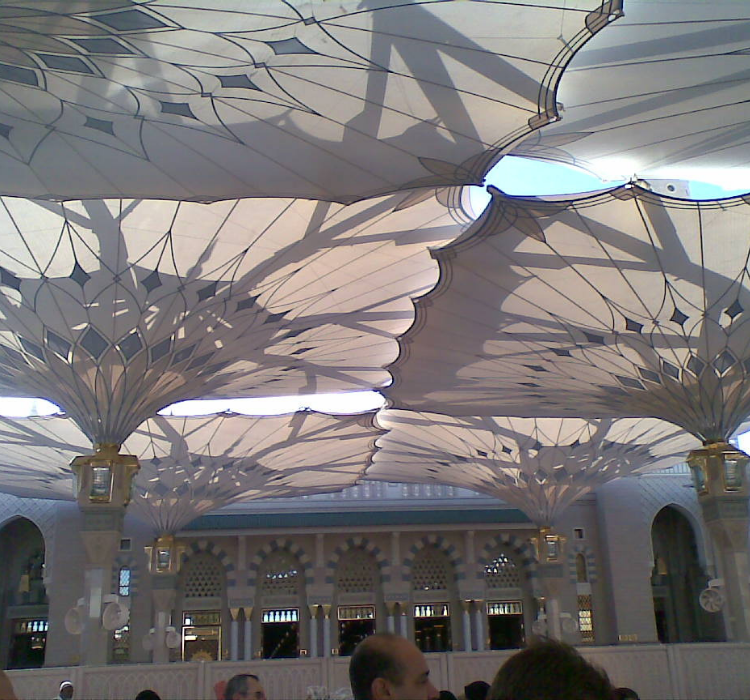
Echoing the mosque's original construction, several columns within the Prophet's Mosque are adorned with carvings of date palms.
This homage to the mosque's initial palm-trunk pillars serves as a reminder of its humble beginnings and the Prophet's close connection with nature.
These columns, blending seamlessly with the mosque's grand architecture, symbolize the faith's deep roots and enduring growth.
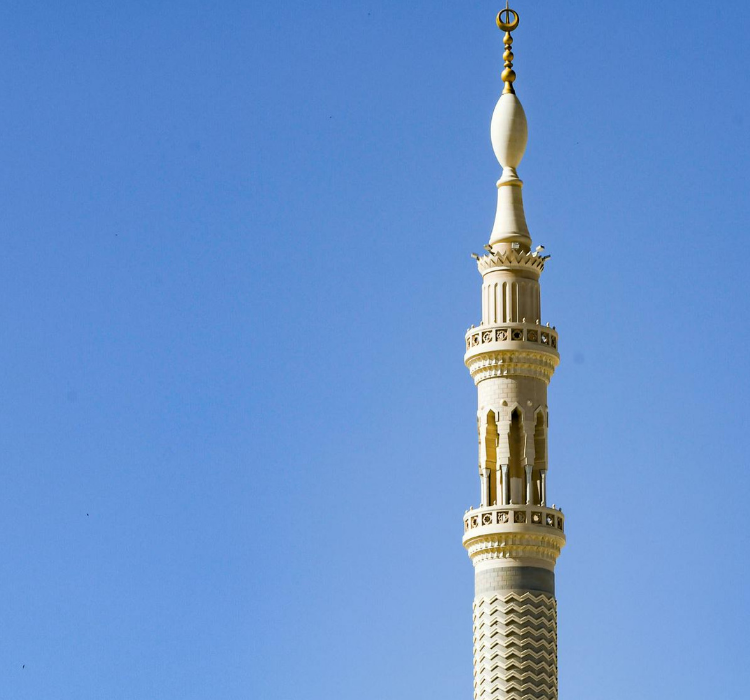
Unique to the Prophet's Mosque is the wall indicating two Qiblas - the direction Muslims face during prayer.
Initially, prayers were directed towards Jerusalem, but a divine revelation changed this direction to the Kaaba in Mecca.
The mosque's two Qiblas represent a pivotal moment in Islamic history, embodying the faith's dynamism and adherence to divine guidance.
In an initiative blending spirituality with sustainability, the mosque has incorporated energy-efficient lighting, illuminating its vast expanse with thousands of eco-friendly lights.
This modern adaptation not only enhances the mosque's beauty at night but also reflects Islam's encouragement of harmony with the environment, casting a serene glow over the sacred space.
Adorning the mosque's interior are verses of the Quran, rendered in exquisite Islamic calligraphy.
This art form, more than mere decoration, is a profound expression of faith, with each stroke resonating with divine reverence.
The calligraphic adornments invite reflection, turning the mosque's walls into silent narrators of the Quran's timeless wisdom.

Upon arrival in Medina, the Prophet Muhammad establishes the first mosque of Islam, marking the site for the future Prophet’s Mosque. This humble structure becomes a cornerstone for the Muslim community, blending worship, governance, and communal life.
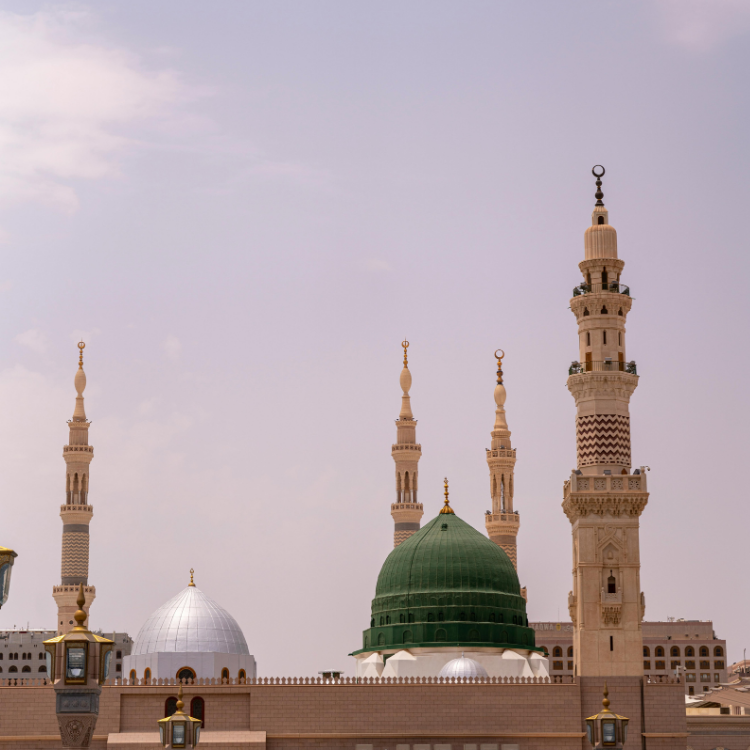
The mosque undergoes its first expansion by the Prophet Muhammad to accommodate the growing number of converts to Islam, reflecting the rapid spread of the faith and its inclusive ethos.
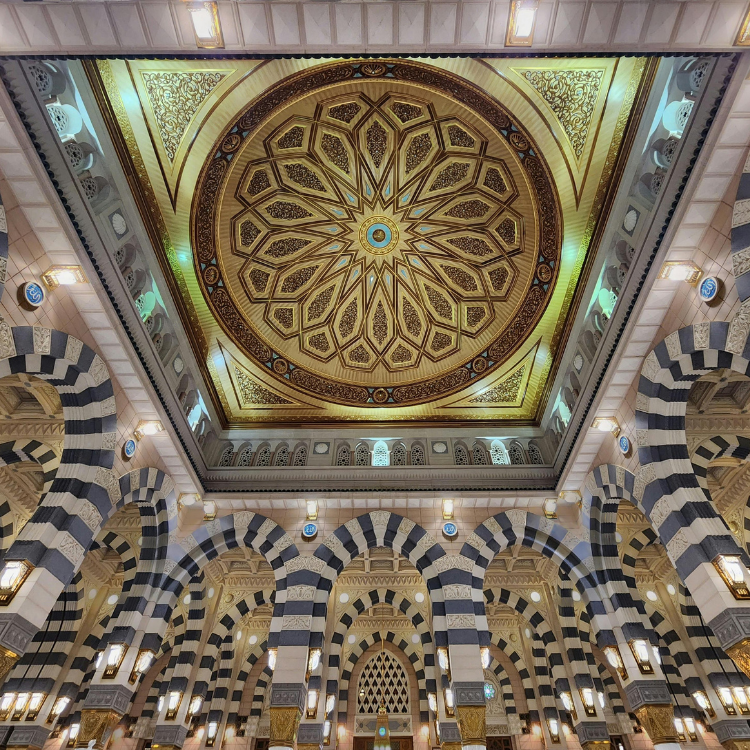
The mosque undergoes its first expansion by the Prophet Muhammad to accommodate the growing number of converts to Islam, reflecting the rapid spread of the faith and its inclusive ethos.

Caliph Uthman ibn Affan further enlarges the mosque, nearly doubling its size, showcasing the Islamic community’s expanding influence and the mosque’s central role in it.

Al-Walid I, the Umayyad Caliph, undertakes significant renovations and expansions, introducing the iconic Rawdah and the Green Dome over the Prophet’s tomb, enhancing the mosque’s spiritual significance and architectural grandeur.

Al-Walid I, the Umayyad Caliph, undertakes significant renovations and expansions, introducing the iconic Rawdah and the Green Dome over the Prophet’s tomb, enhancing the mosque’s spiritual significance and architectural grandeur.

The mosque is renovated and expanded by various rulers, reflecting the enduring importance of Medina and the Prophet’s Mosque in the Islamic world.
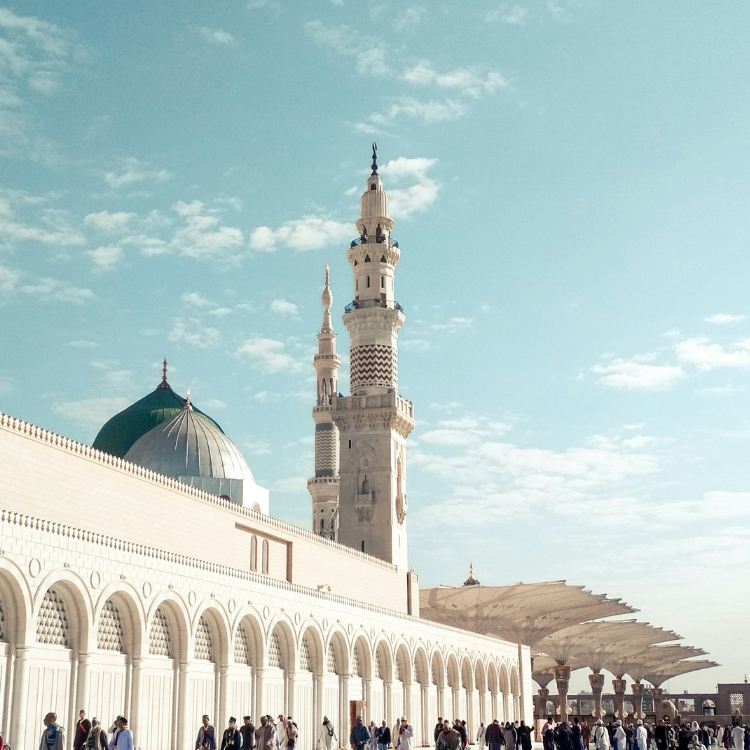
An Ottoman-style minaret is added by Sultan Qaitbay, marking the mosque’s architectural evolution and the enduring legacy of Islamic craftsmanship.

An Ottoman-style minaret is added by Sultan Qaitbay, marking the mosque’s architectural evolution and the enduring legacy of Islamic craftsmanship.

The mosque undergoes comprehensive restoration under Ottoman Sultan Mahmud II, preserving its historical integrity while catering to the needs of an expanding global Muslim community.
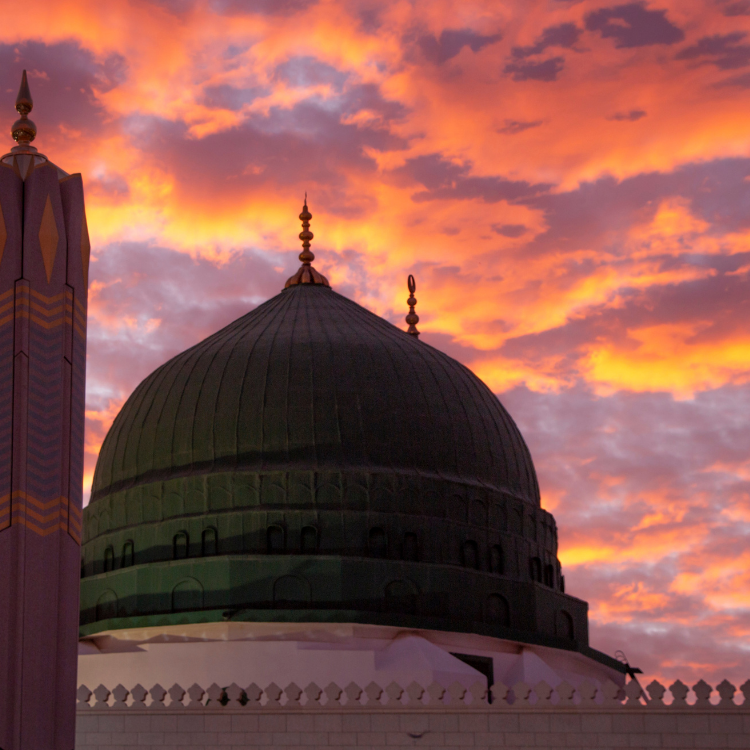
King Saud of Saudi Arabia initiates a large-scale expansion project, modernizing the mosque and significantly increasing its capacity, in response to the growing number of pilgrims visiting Medina.
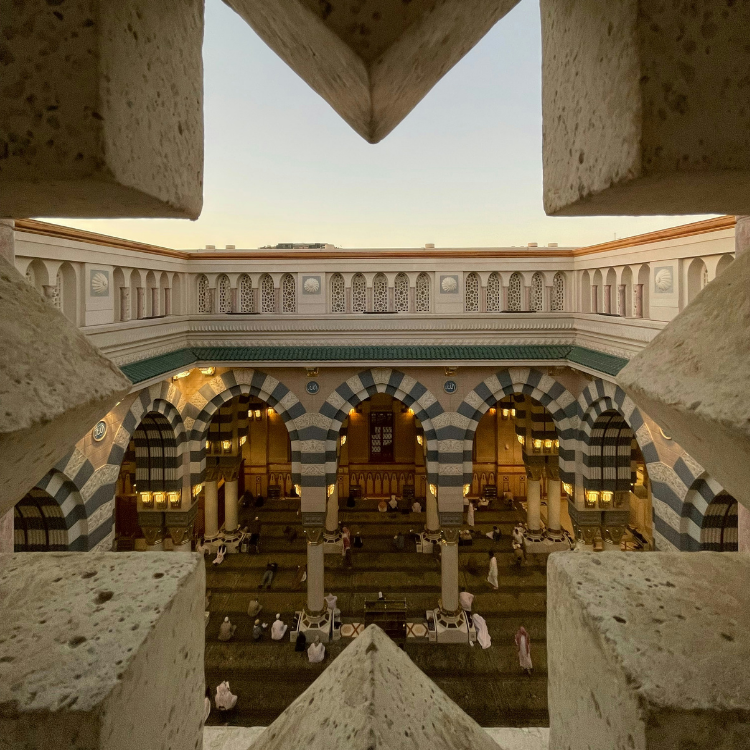
King Saud of Saudi Arabia initiates a large-scale expansion project, modernizing the mosque and significantly increasing its capacity, in response to the growing number of pilgrims visiting Medina.

King Fahd bin Abdulaziz Al Saud further expands the mosque, introducing modern amenities and extending its capacity to accommodate over a million worshippers, signifying the mosque’s global significance as a spiritual hub.

The mosque’s northern expansion begins under King Abdullah bin Abdulaziz, further enhancing its facilities and beautifying its surroundings, ensuring a harmonious blend of tradition and modernity.
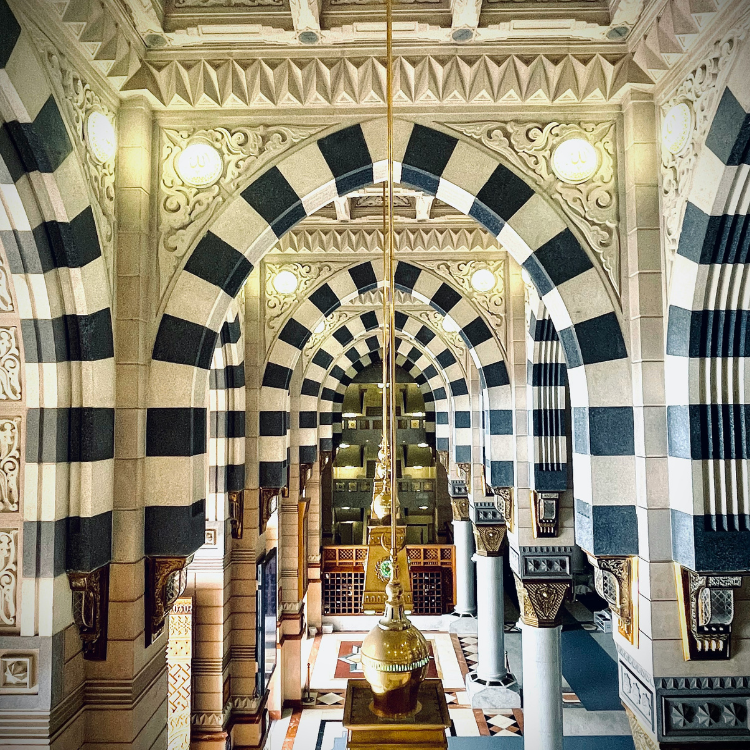
The mosque’s northern expansion begins under King Abdullah bin Abdulaziz, further enhancing its facilities and beautifying its surroundings, ensuring a harmonious blend of tradition and modernity.

Technological advancements, including retractable umbrellas in the courtyard and efficient energy solutions, are introduced, embodying the mosque’s adaptation to contemporary needs while maintaining its spiritual ambiance.

Ongoing efforts to preserve and enhance the Prophet’s Mosque continue, focusing on accommodating an ever-increasing number of visitors from around the world, ensuring the mosque remains a beacon of peace, faith, and unity in the Islamic tradition.

Ongoing efforts to preserve and enhance the Prophet’s Mosque continue, focusing on accommodating an ever-increasing number of visitors from around the world, ensuring the mosque remains a beacon of peace, faith, and unity in the Islamic tradition.


In the heart of Medina, the Prophet Muhammad laid the first stones of what would become the Prophet’s Mosque, signifying a new chapter for the fledgling Muslim community.
This simple act, carried out in 622 CE, was more than the construction of a physical structure; it was the establishment of a spiritual and communal heartland for Islam.
The mosque’s original form, modest and utilitarian, was a testament to the early Muslims’ focus on faith and community cohesion above material grandeur.
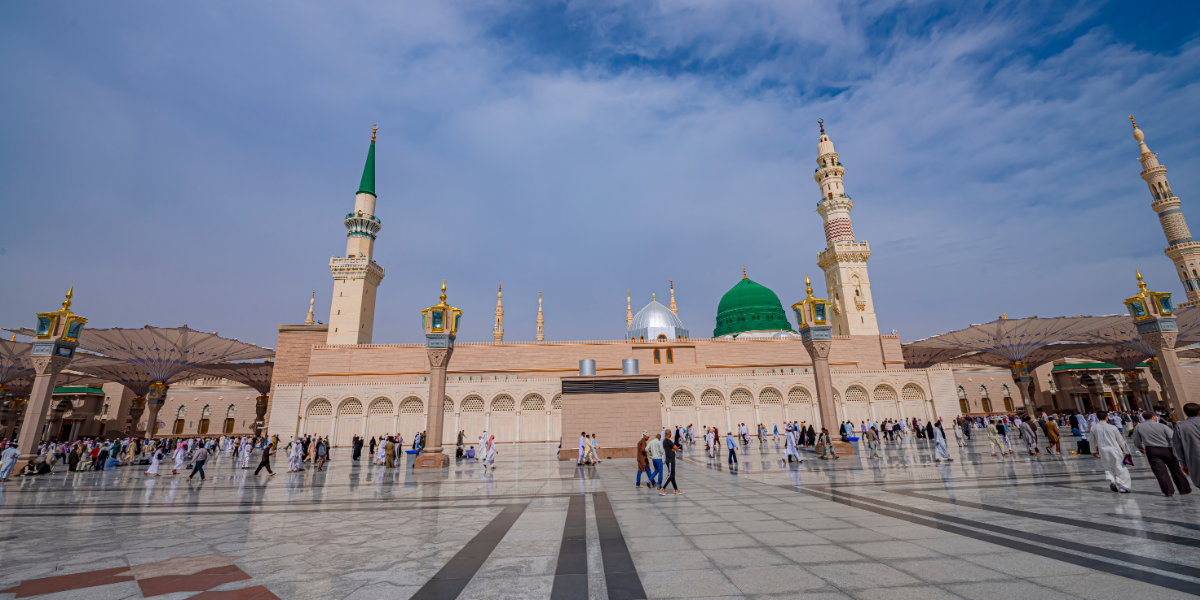
As the Islamic faith flourished, the mosque saw several expansions, each reflecting the community’s growth and the era’s architectural advancements. Caliph Umar ibn Al-Khattab expanded it shortly after the Prophet’s death, and later, Caliph Uthman ibn Affan further enlarged it to accommodate the burgeoning number of faithful.
The Umayyad and Abbasid caliphs, and later the Ottomans, each contributed to the mosque’s development, adding to its grandeur while preserving its sanctity and simplicity.
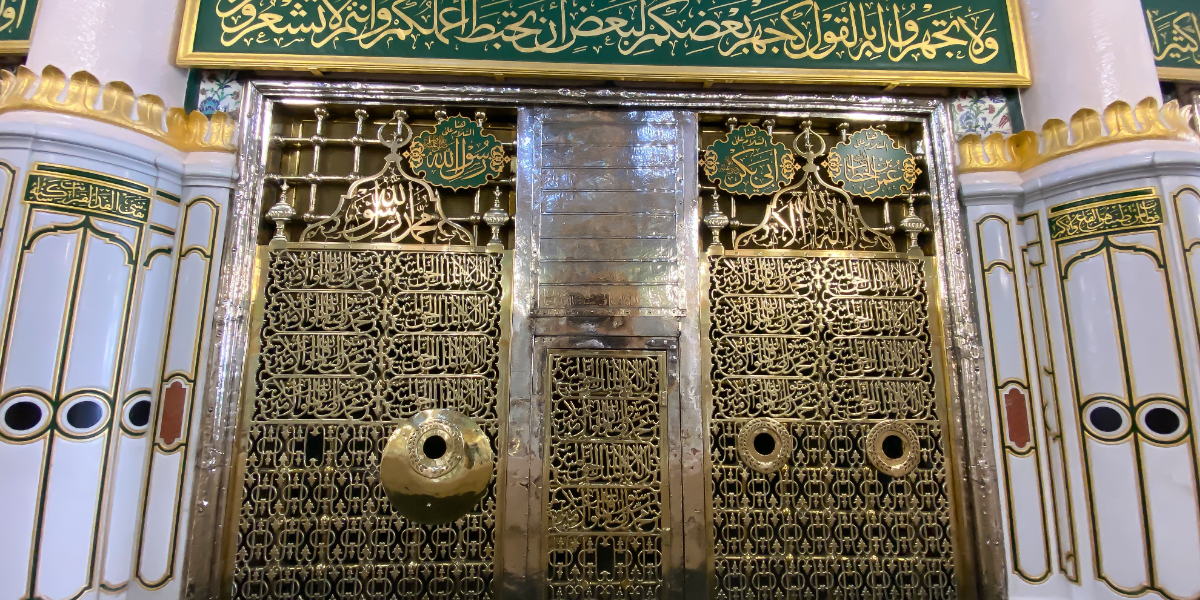
The mosque’s architecture evolved from its initial palm-trunk pillars and mud walls to include vast courtyards, towering minarets, and the iconic Green Dome over the Prophet’s tomb.
These architectural advancements were not merely aesthetic but served to enhance the mosque’s capacity for the growing number of pilgrims and to embody the spiritual magnificence of Islam.
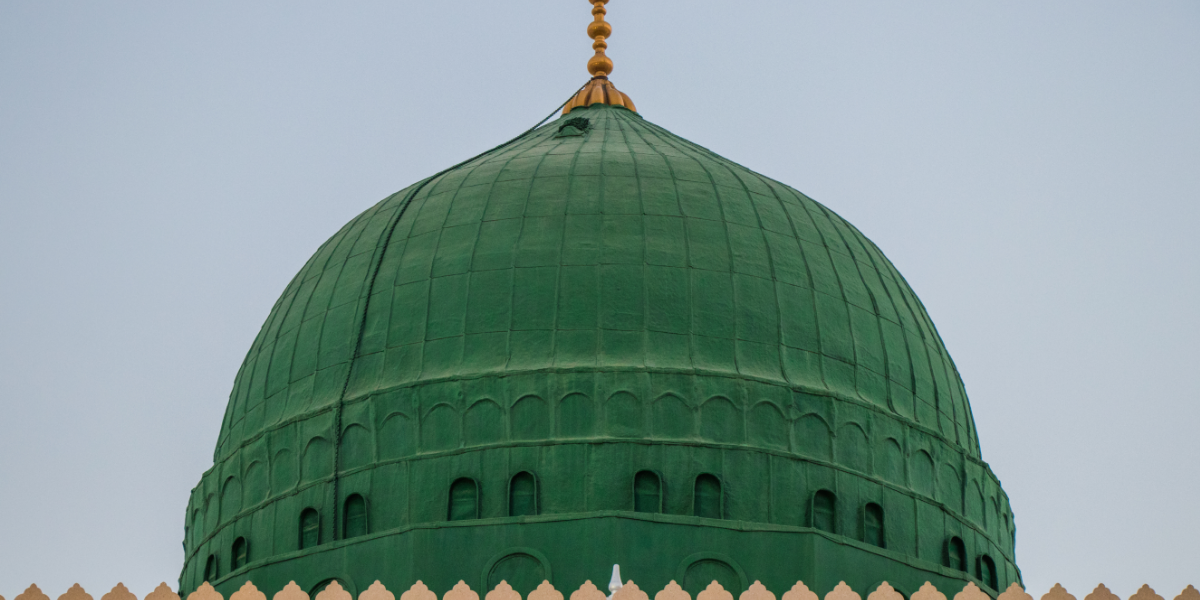
Erected in 1279 and later painted green in the early 16th century, the Green Dome has become an emblem of the mosque, marking the resting place of the Prophet Muhammad.
This revered dome not only signifies the mosque’s spiritual heart but also represents the deep love and respect Muslims worldwide hold for the Prophet.
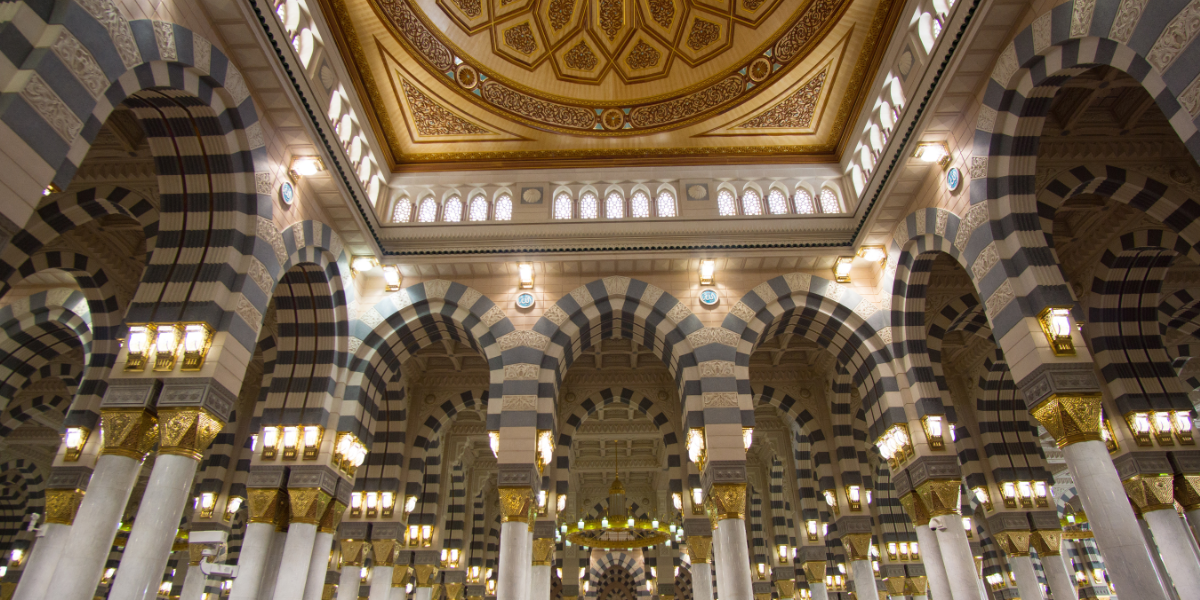
The Prophet’s Mosque has been a center of Islamic learning and spirituality since its inception.
Scholars and seekers of knowledge have long been drawn to its precincts, engaging in study, prayer, and contemplation.
The mosque’s role in promoting Islamic scholarship and fostering a global Muslim identity continues to this day, with millions visiting to deepen their faith and understanding.
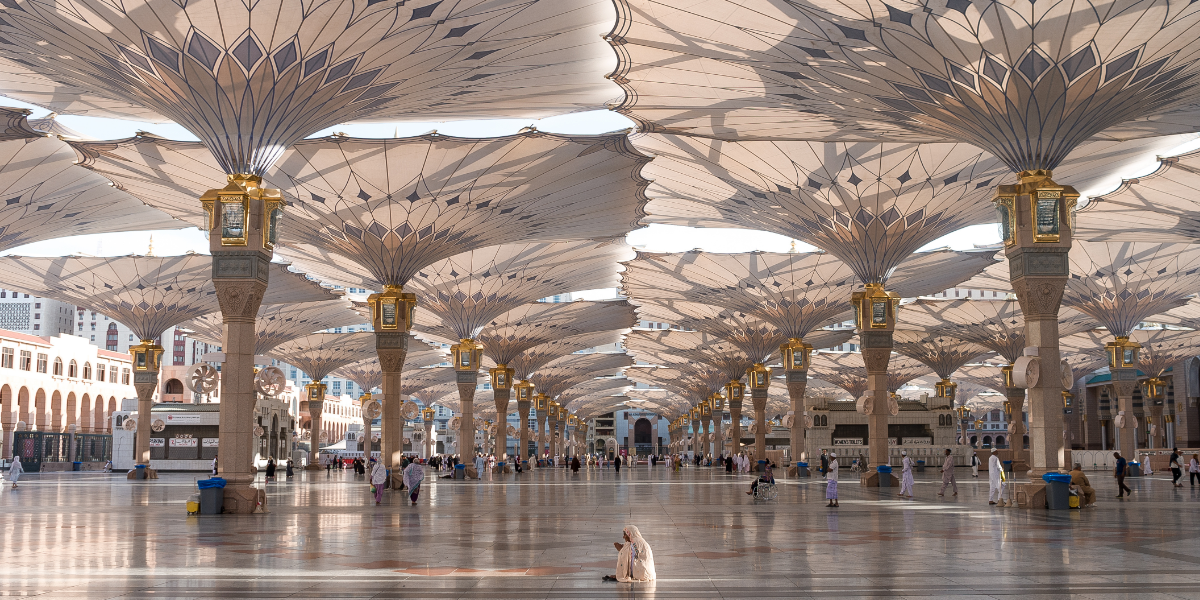
In recent decades, the mosque has undergone significant renovations and expansions to accommodate the increasing number of worshippers and visitors.
These modern enhancements blend seamlessly with the mosque’s historical elements, ensuring that its spiritual ambiance remains untouched while providing for the comfort and convenience of the faithful.
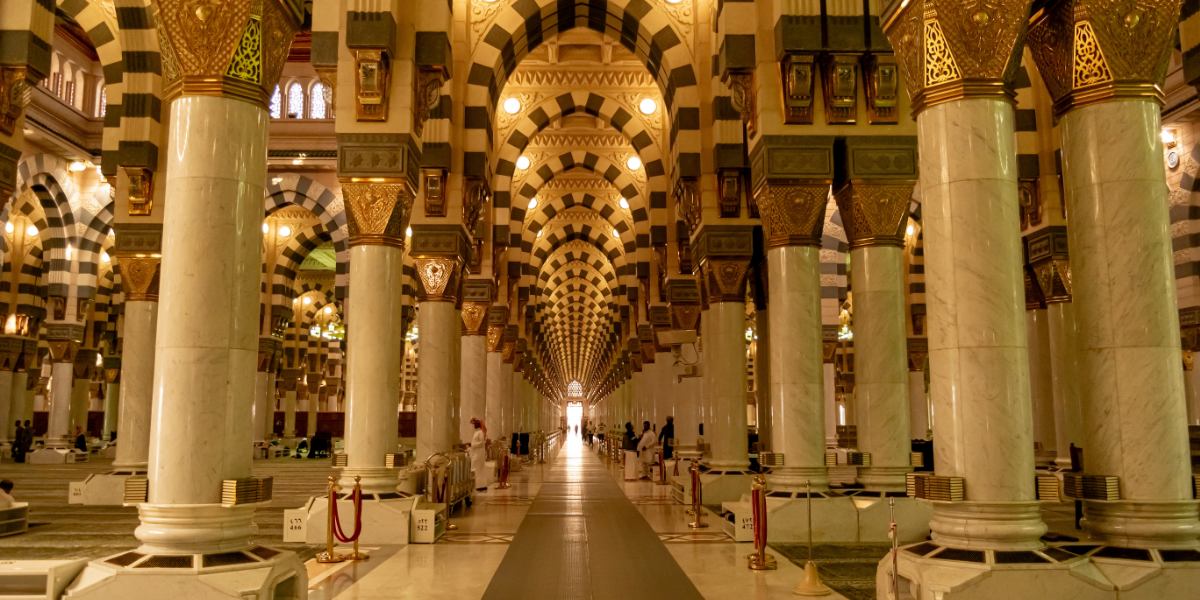
The mosque’s interior and exterior are adorned with Islamic art and calligraphy, weaving a tapestry of Quranic verses and Islamic motifs that envelop worshippers in a serene and contemplative atmosphere.
This artistic legacy is a testament to the mosque’s enduring role as a beacon of Islamic culture and spirituality.
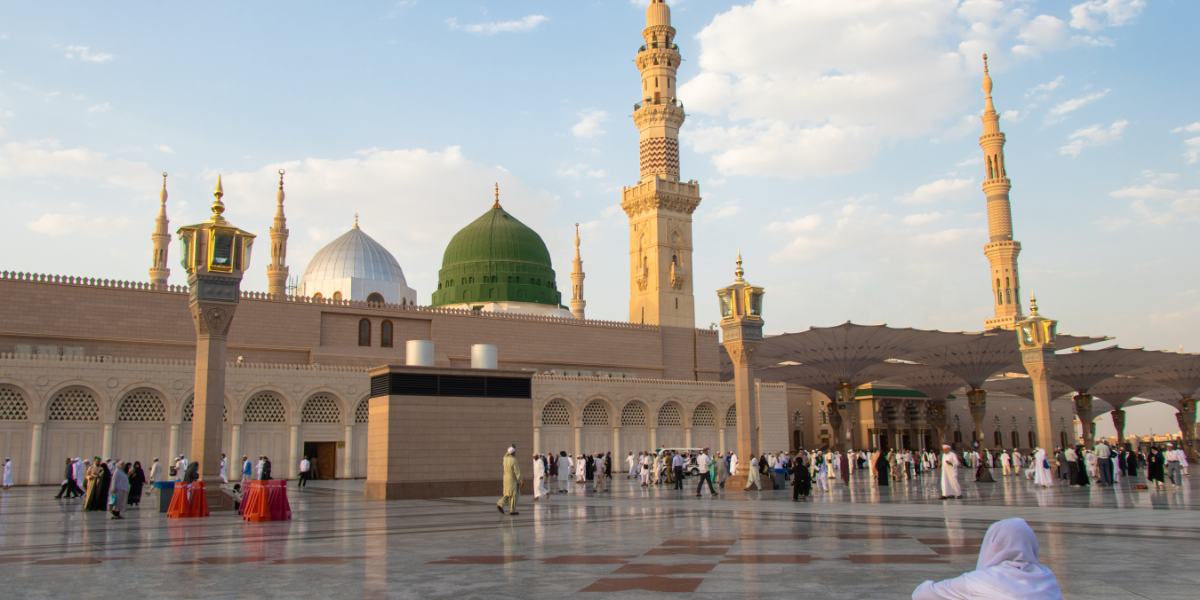
Throughout its history, the Prophet’s Mosque has stood as a sanctuary of peace, prayer, and unity for Muslims.
Its open courtyards and welcoming arches embody the Islamic values of brotherhood, equality, and inclusivity, making it a spiritual home for believers from across the globe.
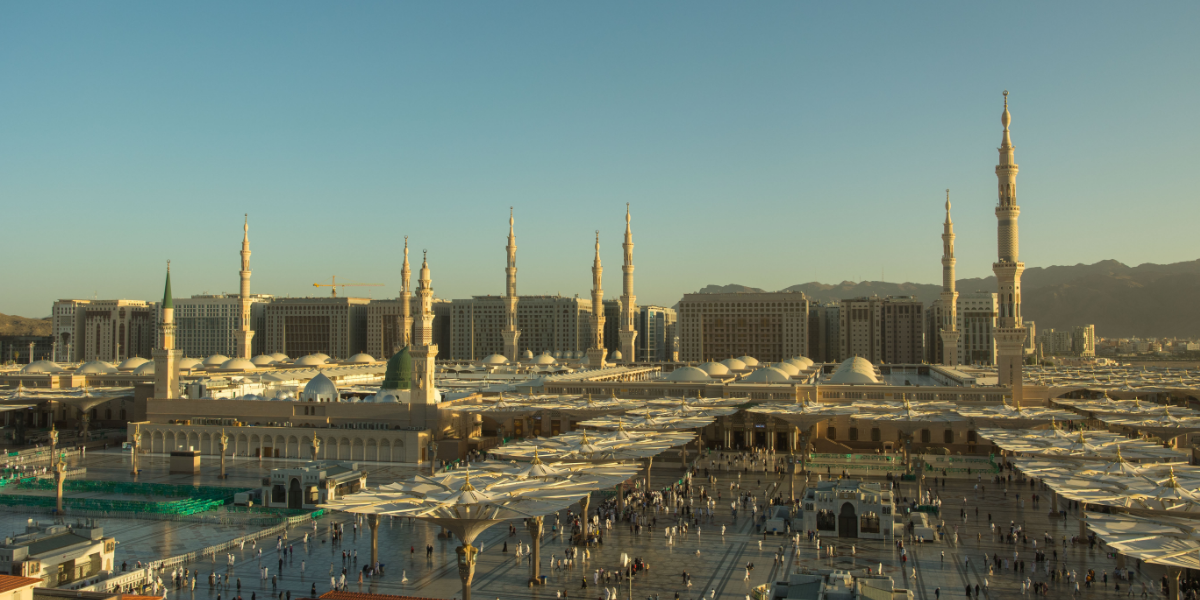
Efforts to preserve the mosque’s rich historical and spiritual heritage are ongoing, with each renovation and expansion undertaken with the utmost care to maintain its integrity and significance.
The Prophet’s Mosque remains a living symbol of the Islamic faith’s journey through time, from its modest beginnings to its place at the heart of a global community.
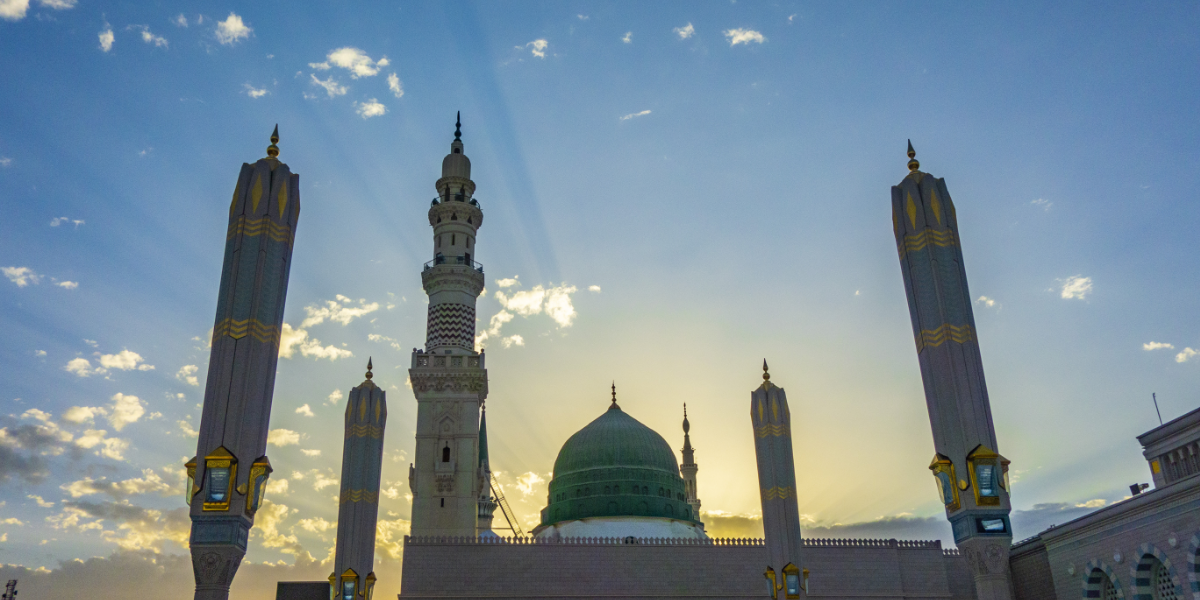
As the second holiest site in Islam, the Prophet’s Mosque continues to serve as an eternal beacon of faith, guiding the faithful towards a path of righteousness and spiritual fulfillment.
Its history is a reflection of Islam’s enduring legacy, a story of humble beginnings, communal spirit, and the unifying power of faith.
Contact Us
Copyright © 2025 Temples.org. All rights reserved.